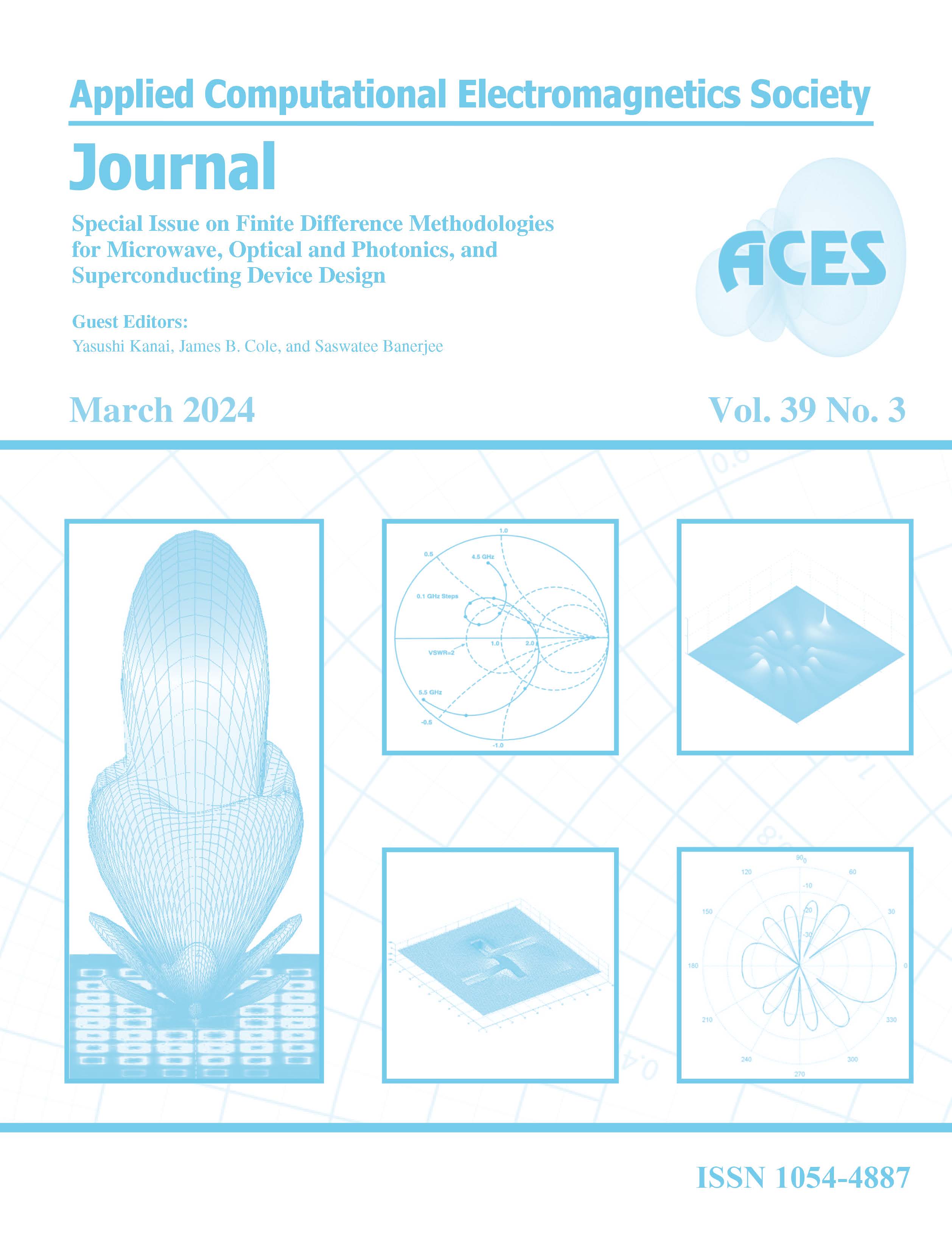Nonstandard Finite Difference Time Domain Methodology to Simulate Light Propagation in Nonlinear Materials
DOI:
https://doi.org/10.13052/2024.ACES.J.390303Keywords:
Finite difference time domain (FDTD), Nonlinear optics, Nonlinear susceptibility, nonstandard FDTD, quantum electrodynamics, superconductivityAbstract
We extend the nonstandard (NS) finite difference time domain (FDTD) methodology, originally developed to solve Maxwell’s equations in linear materials, to nonlinear ones. We validate it by computing harmonics generation in a nonlinear dielectric and comparing with theory. The methodology also applies to the quantum electrodynamics that describes the interaction of charged particles with electromagnetic fields, and also to the Ginzburg-Landau model of superconductivity.
Downloads
References
K. S. Kunz and R. J. Luebbers, The Finite Difference Time Domain Method for Electromagnetics. Boca Raton: CRC Press, 1993.
J. B. Cole and S. Banerjee, Computing the Flow of Light, Bellingham: SPIE Press, 2017.
R. Mickens, Advances in the Applications of Nonstandard Finite Difference Difference Schemes, Singapore: World Scientific, 2005.
E. Merzbacher, Quantum Mechanics, 2nd ed. Hoboken: John Wiley, 1970.
R. W. Boyd, Nonlinear Optics, 3rd
ed. Cambridge, MA: Academic Press, 2008.
J. Strikwerda, Finite Difference Schemes and Partial Differential Equations, 2nd ed. Philadelphia: SIAM, 2004.
J. R. Pierce, An Introduction to Information Theory: Symbols, Signalsand Noise, 2nd ed. New York: Dover Publications, 1980.
A. Kiran Güçoğlu, The Solution of Some Differential Equations by Nonstandard Finite Difference Method, MS Dissertation, İzmir Institute of Technology, Türkiye, 2005.
B. Engquist and A. Majda, “Absorbing boundary conditions for the numerical simulation of waves,” Mathematics of Computation, vol. 31, pp. 629–651, 1977.
G. Mur, “Absorbing boundary conditions for the finite- difference approximation of the time domain electromagnetic field equations,” IEEE Transactions on Electromagnetic Compatibility, vol. 23, pp. 377–382, 1981.
J. A. Stratton, Electromagnetic Theory. New York: McGraw-Hill Book Company, 1941.
P. W. Barber and S. C. Hill, Light Scattering by Particles: Computational Methods, World Scientific, Singapore, 1990.




